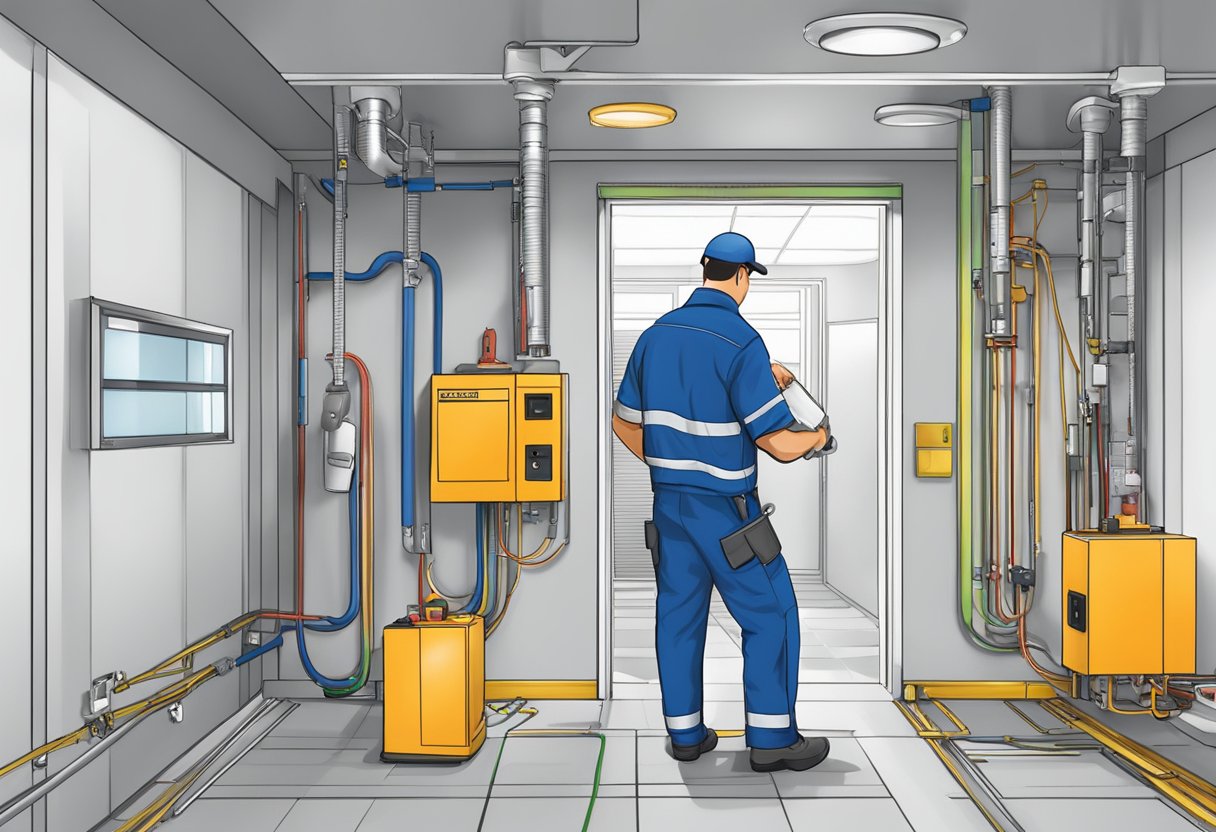Fire alarm systems offer early detection to help stop the spread of fire and evacuate quickly. They include appliances like horns, bells and chimes as well as strobe lights for those hard of hearing or deaf people who need extra warning.
These systems are powered by primary power sources like commercial breakers and feature backup batteries to continue operation if power goes out.
Detectors
Selecting the appropriate fire detection system can have serious ramifications for safety, cost and compliance of your facility. It’s vital to carefully explore your options, assess potential risks and seek professional advice prior to making this important decision.
Conventional fire alarm systems typically employ physical wiring to interconnect call points and detectors, with signals from each device wired directly into a main control panel. Call points and detectors are organized into zones to make it easier to pinpoint the source of an alarm; these zones may be determined based on floors, types of initiating devices or any other factor.
Modern addressable systems offer enhanced fault isolation, reduced false alarms and faster response times. Furthermore, these modern solutions also feature remote diagnostics, simplified maintenance scheduling and improved documentation.
Installation of fire alarm systems requires meticulous planning in order to ensure each device operates as intended and all electrical connections meet code specifications and standards. For hardwired systems, licensed electricians should be hired for completion.
Even battery-powered systems require regular maintenance, including testing and replacing of batteries. Furthermore, maintaining detectors requires keeping them clean to protect against dust and pollutants that could compromise their performance; light dusting using a dry cloth should suffice, with deeper cleanings recommended annually. Batteries should also be replaced on an annual schedule or when they emit an audible “chirping sound,” to ensure they will operate as intended in case of an emergency situation.
Alarms
Alarm systems are designed to detect smoke, heat and carbon monoxide emissions in buildings and sound a warning when detected – giving early warning and prompt evacuation procedures so as to minimize property loss or damage. They provide critical early warning and fast responses in emergency situations.
Establishing the appropriate fire alarm system for your building begins with understanding the types of fires that need protection and how each works. Traditional systems divide buildings into zones, and each alarm within that zone connects directly to a central panel which displays where problems exist; this is an effective setup but requires more maintenance and testing for optimal performance.
Addressable fire alarm systems use a network of devices connected by wires that communicate to one another to quickly notify residents in case of an emergency. They are much more cost-efficient than conventional systems and provide more comprehensive coverage with no blind spots. In addition, addressable systems offer additional features like self-testing capabilities for optimal functionality.
No matter the type of fire alarm system you opt for, having it installed and maintained by certified professionals is of utmost importance. Failure to adhere to established standards and regulations could result in fines, liability claims or worse – an ineffective alarm that fails to protect both buildings or occupants.
Monitoring
Fire alarm systems should be monitored by a professional company who will notify emergency services as soon as a problem arises, to ensure your system will function correctly during an emergency and comply with local regulations.
As soon as a fire or smoke incident is detected, detectors send a signal to the control panel which activates an alarm to notify residents and firefighters. Additional devices may include voice messages or horn strobes designed specifically to aid those who are hearing or visually impaired.
Conventional security systems divide buildings into zones, making it easier to pinpoint which area triggered an alarm. They’re easy, cost-effective and provide great protection for smaller properties with straightforward layouts.
Addressable systems provide similar functions as traditional ones, yet enable more precise zone identification by assigning each device a unique address through dip-switches. The control panel then determines which detector sent out a signal and which devices were tripped upon.
Maintaining your fire alarm system is essential to keeping employees and visitors safe during an emergency, according to NFPA guidelines. Inspection and testing should occur regularly – monthly checks involve pushing manual pull stations, testing visible alarms, as well as sampling visible and audible alarms; quarterly or annual reviews cover more comprehensively to check operation of all system components.
Maintenance
Though fires cannot be completely prevented, an effective fire alarm system can help minimize damage and protect lives by alerting occupants in time to save themselves. However, for this equipment to function effectively it must be regularly serviced and maintained.
Maintenance requirements depend on the type and location of a fire alarm system, as well as environmental considerations. It is crucial that local regulations are observed and requirements outlined by an Authority Having Jurisdiction (AHJ).
Professional service companies should perform regular fire system maintenance, including visual inspections and thorough test and commissioning procedures. This should include an evaluation of system layout, power supply checks, any signs of tampering as well as communication among devices and with the control panel.
Cleanliness of fire alarms is also key. Achieve this through scheduling regular cleaning schedules for each device and wiping surfaces regularly with damp cloths.
Schedule regular fire alarm inspections and maintenance at off-peak times to reduce impact on business operations, and to ensure the system can protect occupants in an emergency. This is especially beneficial when planning major events, renovations or operational changes.

